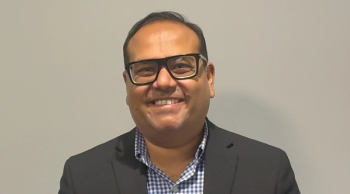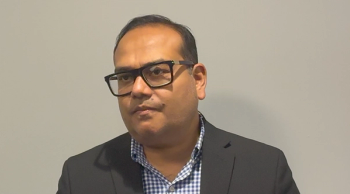
Oncology NEWS International
- Oncology NEWS International Vol 5 No 11
- Volume 5
- Issue 11
Klausner Cites Breast Cancer Progress in Jo Oberstar Lecture
WASHINGTON--Breast cancer mortality continues to drop among white women in the United States, Canada, and Great Britain, and, for the first time, it has dropped in black American women, NCI Director Richard Klausner said in his delivery of the 6th Annual Jo Oberstar Memorial Lecture at the George Washington University School of Medicine.
WASHINGTON--Breast cancer mortality continues to drop among white women in the United States, Canada, and Great Britain, and, for the first time, it has dropped in black American women, NCI Director Richard Klausner said in his delivery of the 6th Annual Jo Oberstar Memorial Lecture at the George Washington University School of Medicine.
Although the reasons for the drop are not certain, Dr. Klausner believes that "the most profound component is adjuvant therapy, with early detection also playing a role."
New statistics released by the Centers for Disease Control and Prevention in early October show the incidence of breast cancer rising 34% among white women and 47% among black women in the United States between 1973 and 1992. "Virtually all of the increased incidence over the last 15 years has been the diagnosis of early, localized breast cancer," Dr. Klausner said.
During most of this same period, breast cancer mortality remained flat and then began decreasing in white women in 1989. "In the United States, Canada, and Great Britain, suddenly there was a change," he said. "It's been decreasing every year, and the latest data suggest that this trend is continuing at the same slope."
In the United States, the overall decline for white women has been 6%, but this varies among various age groups. "There is a 13% to 14% drop in mortality in the youngest group of women [those under age 40], and about 10% at age 40 to 49," he noted. The decrease began first in younger women and then appeared in older age groups.
"For the first time last year, we saw the beginning of this same pattern for African-American women," Dr. Klausner said. "We see for the first time breast cancer deaths being flat or dropping for all African-American women below the age of 70. The most recent data we've looked at suggest that, as with Caucasian women, this trend continues."
These findings, he added, "suggest there is no reason we cannot make the same kind of progress against this disease as we made against testicular cancer, which is now curable in 90% of cases."
A Periodic Table for Biology?
Dr. Klausner noted that over the last quarter century, science had made "slow but real progress in increasing cancer survival and in increasing the number of individuals who are cured." And he spoke enthusiastically of the potential for soon solving fundamental questions about the cancer process as the result of advances in genetics, microbiology, and understanding of the human genome.
He compared the state of cancer today to that of chemistry 100 years ago. "For much of the 19th century, chemistry expanded by empiricism until order was brought to the chaos of the physical universe with the extraordinary recognition of the periodic table," he said. "At the end of the 20th century, we recognize very similarly that biological information is finite and that we can, in fact, know it all.
"We are about to write down the periodic table of biology. It will be the crowning achievement of medical research of this century. It will not be written in rows and lines. It will be written as branching trees whose connectedness and complete set of pieces will allow us to finally solve basic biological puzzles."
The annual Oberstar lecture is named in honor of Jo Oberstar, a professional development consultant, teacher, and advocate for women in the workforce, who died of breast cancer in 1991.
Articles in this issue
almost 29 years ago
Factor Analysis of New Symptom Scale in Breast Cancer Finds Six Clustersabout 29 years ago
AIDS Funding Increased for Fiscal '97about 29 years ago
'Cancer Rates and Risks' Availableabout 29 years ago
New Breast Cancer Patient Resource Is Availableabout 29 years ago
Short-Term Metronidazole not Linked to Cancerabout 29 years ago
Various Capitation Models Are Available for Oncology Networksabout 29 years ago
NCI Urges full Disclosure of Cigarette Contentsabout 29 years ago
Antifungal Resistance on the Increaseabout 29 years ago
Fentanyl Patch Useful Alternative in Cancer Pain Patientsabout 29 years ago
Analysis of Microvessel Density Predicts Extraprostatic SpreadNewsletter
Stay up to date on recent advances in the multidisciplinary approach to cancer.



















































































